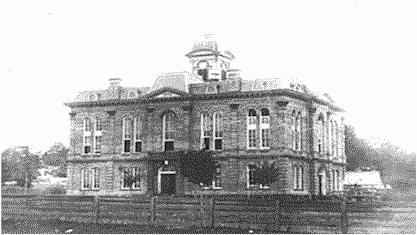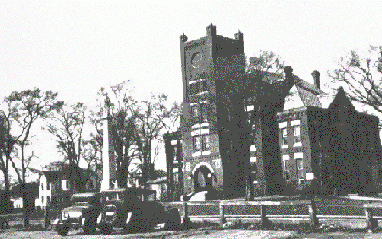History
1800s - 1900s
Gregg County was inhabited by Caddo Tribes until the early 1800s and partly by Cherokee immigrants until 1839. Gregg County was settled by farmers from the southern United States after Texas achieved statehood in 1845. In 1860, the future Gregg County, consisted of parts of Upshur and Rusk counties with nine rural post offices but not towns.
The Southern Pacific Railroad established Longview (the county seat) at Earpville in 1870 and paused there in constructing its transcontinental line. The town was incorporated in 1871. During 1872, the International Railroad (later called International & Great Northern Railroad) built a line between Longview and Hearne, eventually reaching Mexico. Kilgore was created by the International Railroad near New Danville in 1872. The Southern Pacific was acquired by the Texas & Pacific Railroad, which resumed construction westward from Longview early in 1873 and established Gladewater near Point Pleasant. In 1877, Longview businessmen formed the Longview and Sabine Valley Railroad (later acquired by the Santa Fe Railroad), heading toward Sabine Pass. Meantime, Longview acquired enough influence to have a county of its own.
In 1873, State Representative B. W. Brown (of Summerfield Community north of Longview) introduced a bill to create a new county from parts of Upshur, Rusk and Harrison counties. However, Harrison County successfully resisted fragmentation, and the Rusk County portion turned out smaller than desired.
The name for Gregg County commemorated a popular secessionist leader named John Gregg who was killed in action as a Confederate General.
In Longview, Kilgore and Gladewater cotton was the foundation of the economy, occupying about half of the county's cultivated acreage, and the use of the uncultivated acreage was timber for the sawmills. Longview also had offices and shops for the three railroads, Kelly Plow Works after 1882 and the Graham Box Factory after 1903.
1930s - Present
Late in 1930, Gregg County was rescued from the Great Depression by the largest pool of petroleum ever discovered in the United States. Nearly half of the field's 200 square miles lay in the western third of the county.
Transformed into boom towns, Kilgore and Gladewater became incorporated early in 1931. By the time drilling slacked off in 1935, there were about 15,000 wells and 95 refineries in the field. Among a multitude of civic improvements, the new wealth resulted in the creation of Kilgore College.
Oil and natural gas enabled Gregg County to make the most of the national boom that accompanied and followed World War II. Due to local political influence, the government built Harmon General Hospital near Longview during the war and afterwards donated it for use as LeTourneau Technical Institute (later named LeTourneau University). The hospital was part of the inducement for building the LeTourneau Factory at Longview.
The Texas Eastman plant, established near Longview in 1950, became the largest petrochemical complex in inland Texas. Another industrial milestone was the Schlitz (later named Stroh) Brewery in 1964. Also beginning in 1964, the construction of Interstate Highway 20 confirmed Gregg County's fortunate location on a natural east-west transportation artery. By the time the county celebrated its centennial in 1973, its position as a thriving industrial center and desirable place to live was assured into the twenty-first century.



